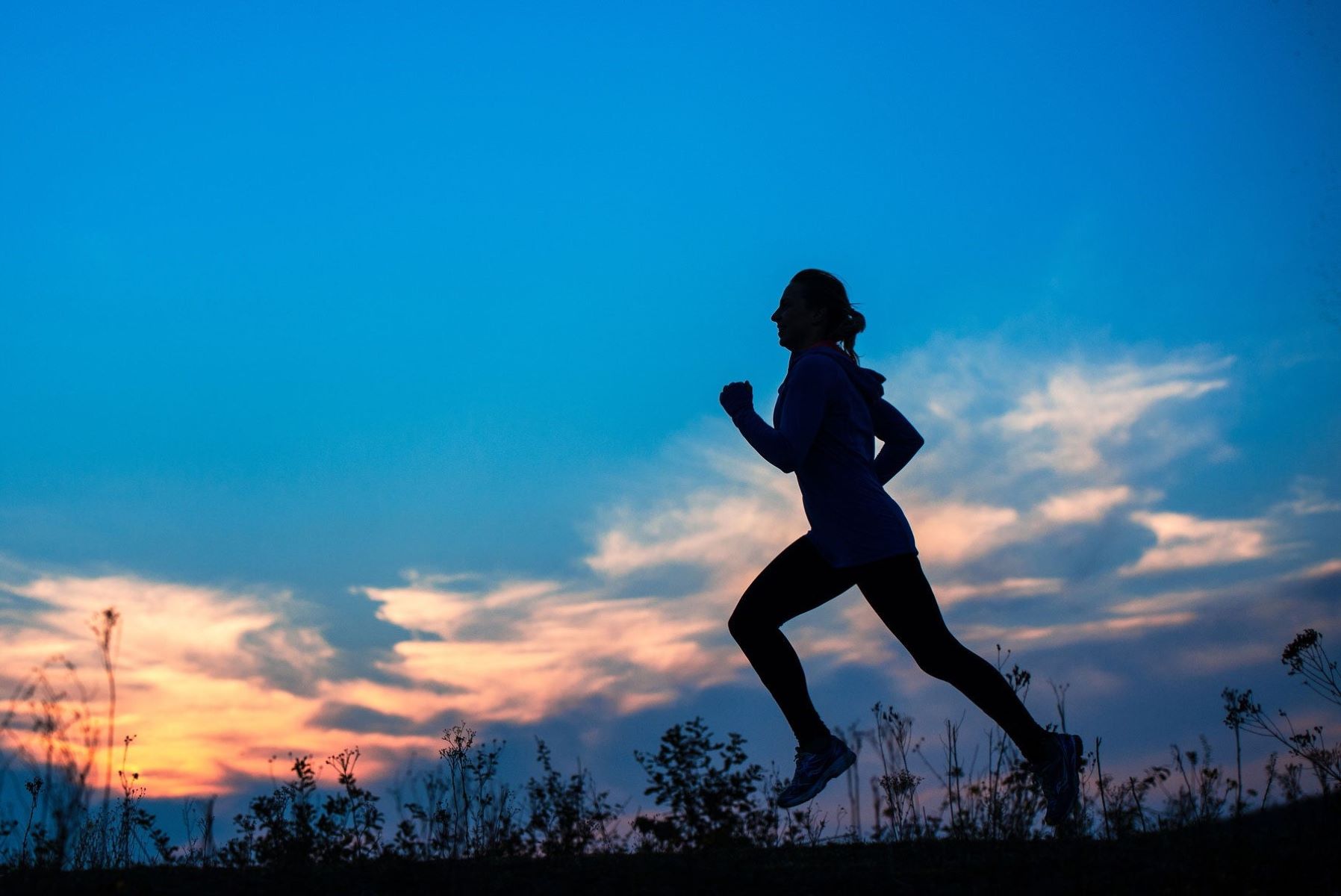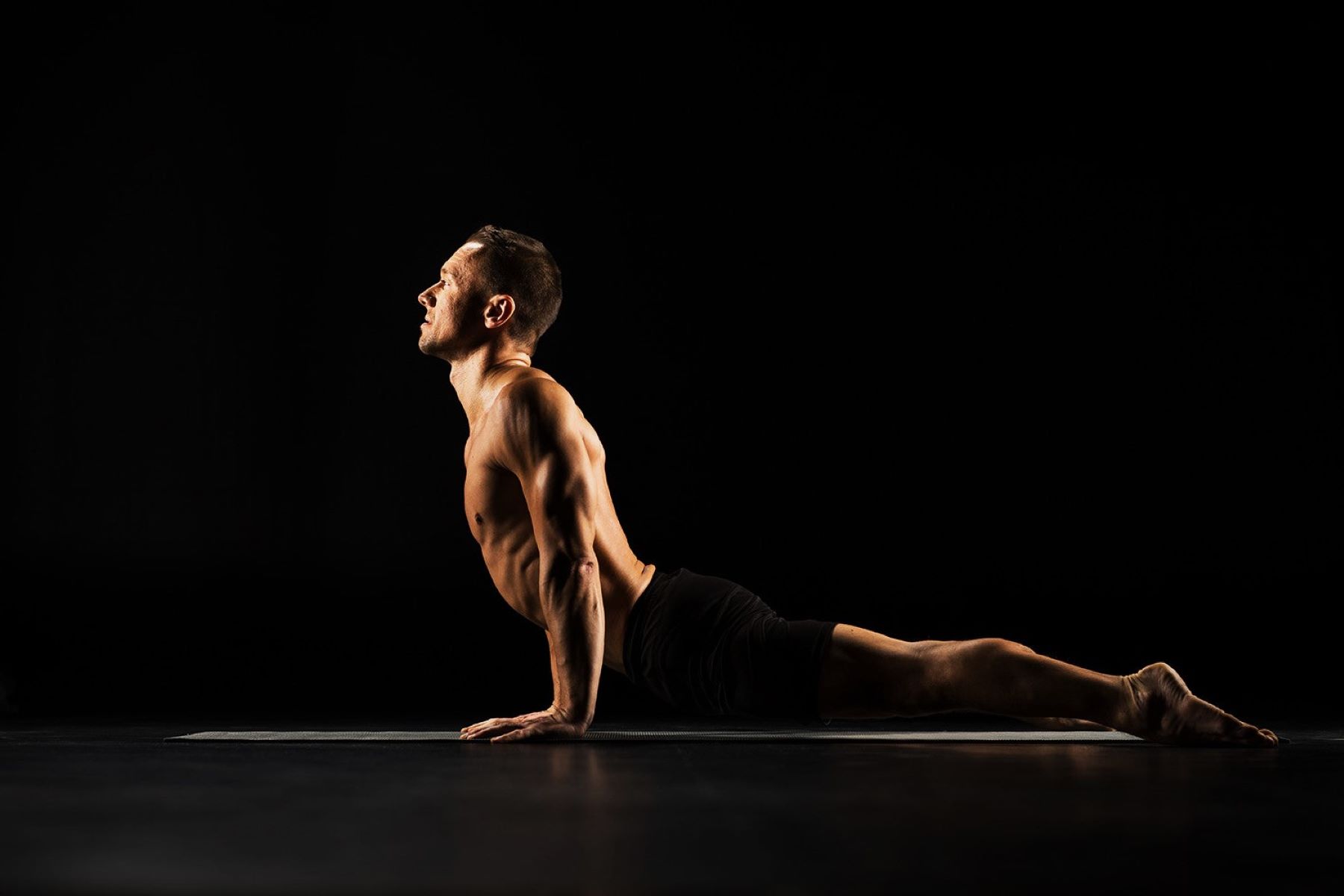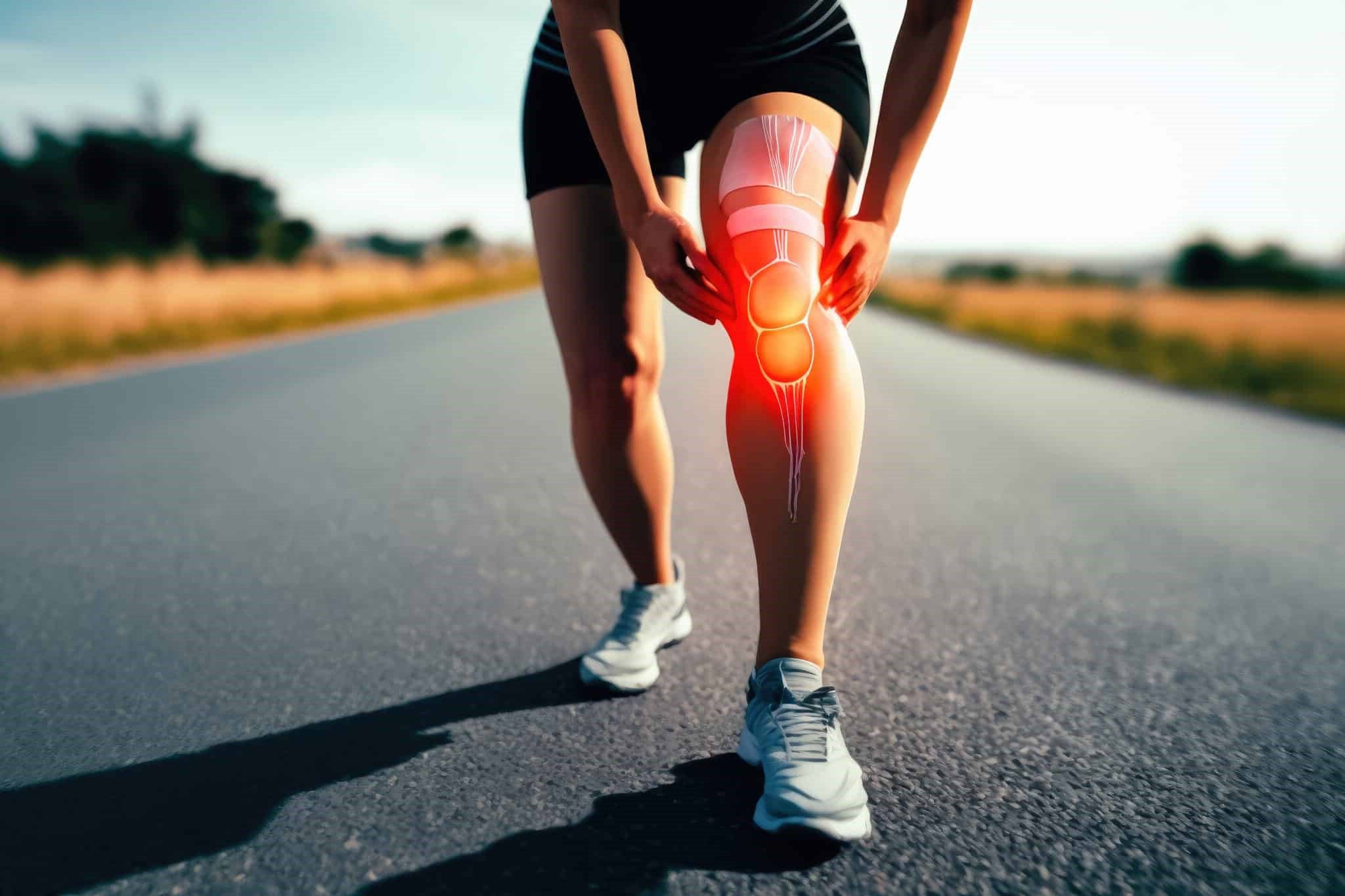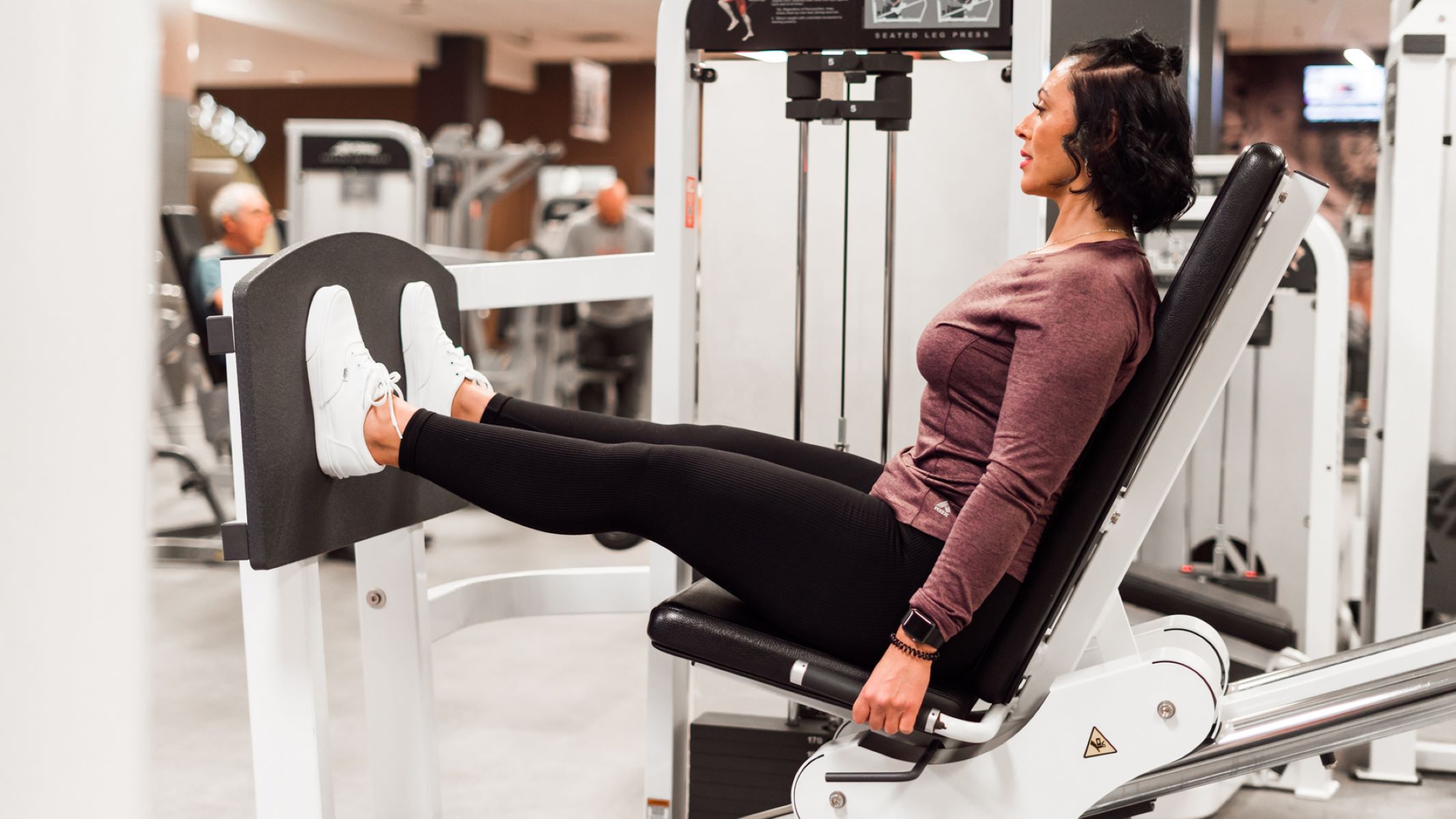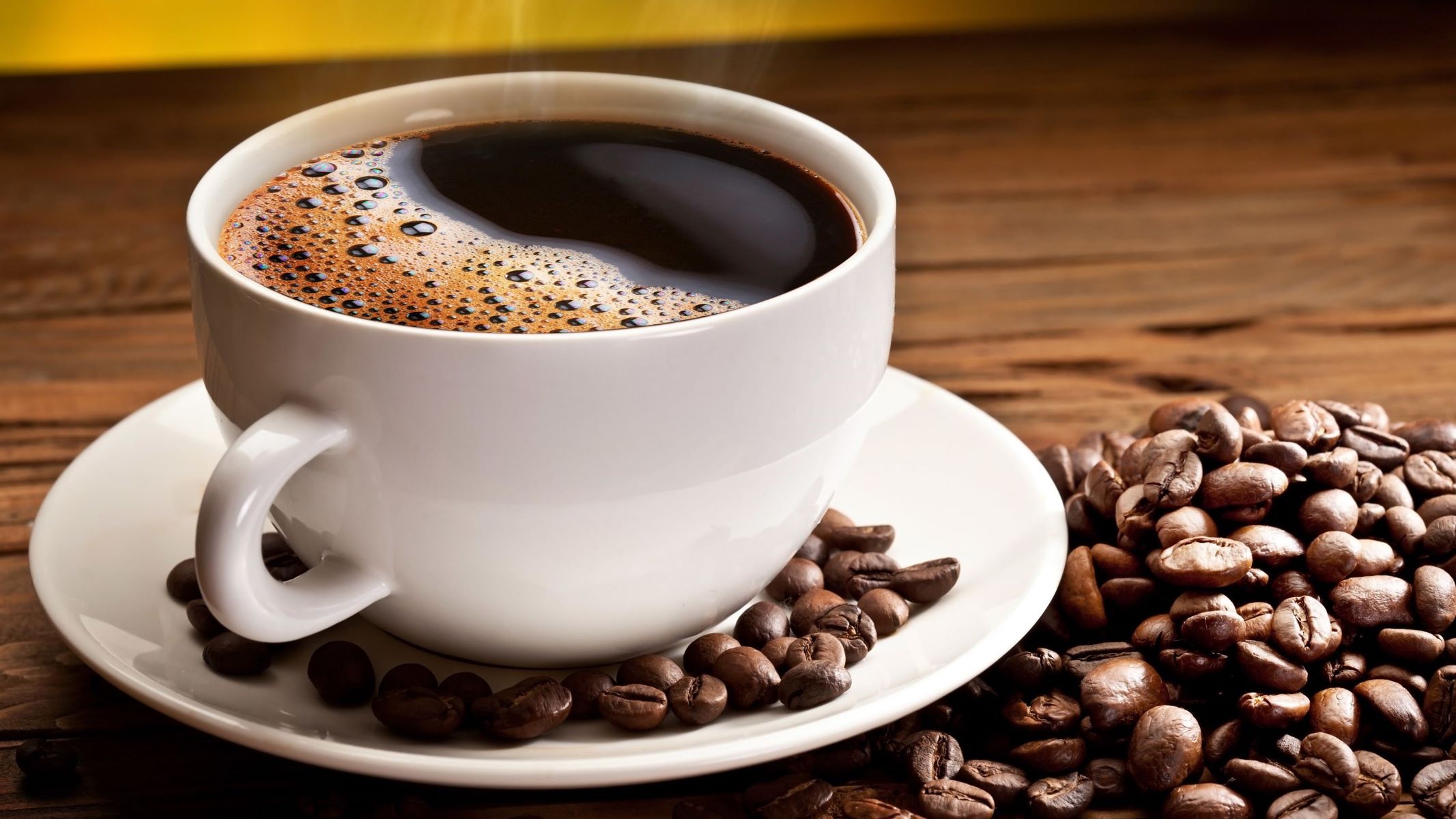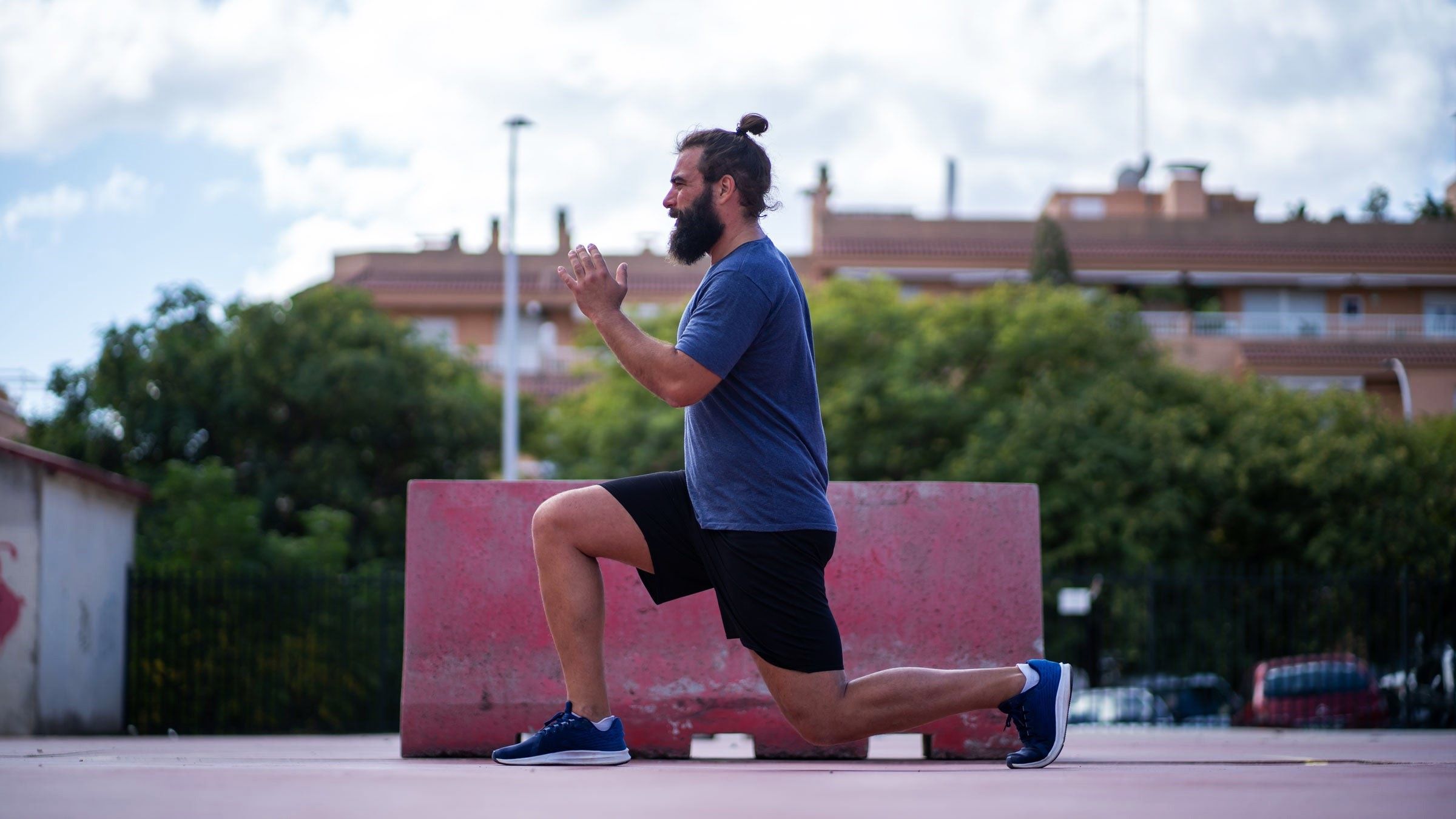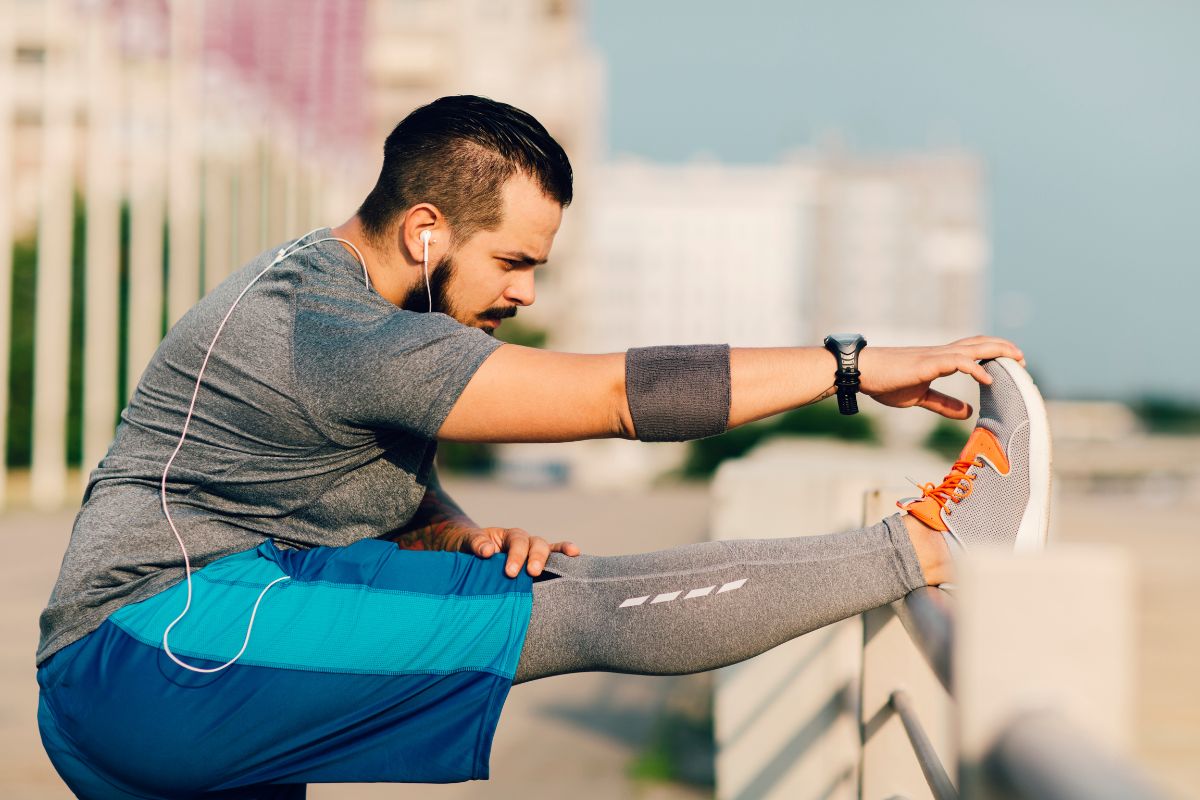Home>Gear & Reviews>Essential Items For Runners’ Shopping List


Gear & Reviews
Essential Items For Runners’ Shopping List
Published: March 6, 2024
Discover the must-have gear and reviews for runners with our comprehensive shopping list. Find essential items to enhance your running experience.
(Many of the links in this article redirect to a specific reviewed product. Your purchase of these products through affiliate links helps to generate commission for Therunningadvisor.com, at no extra cost. Learn more)
Table of Contents
Running Shoes
When it comes to running, the most essential item for any runner is a good pair of running shoes. The right pair of shoes can make a significant difference in your performance and overall comfort while running. Here are some key factors to consider when choosing the perfect pair of running shoes:
1. Proper Fit
The fit of your running shoes is crucial to prevent discomfort and potential injuries. Look for shoes that provide ample room for your toes and a snug fit around the heel. It's recommended to go to a specialty running store where experts can analyze your gait and foot shape to recommend the best-fitting shoes for you.
2. Cushioning and Support
Different runners have different needs when it comes to cushioning and support. Some may require extra cushioning for shock absorption, while others may need more support for stability. Consider your running style and any specific foot conditions you may have when selecting the level of cushioning and support in your shoes.
3. Breathability
Running shoes with breathable materials help keep your feet cool and dry, reducing the risk of blisters and discomfort. Look for shoes with mesh uppers that allow for proper ventilation during your runs.
4. Durability
Since running shoes endure a lot of wear and tear, it's important to invest in a durable pair that can withstand the impact of regular running. Quality materials and construction can contribute to the longevity of your shoes.
5. Terrain-Specific
Consider the type of terrain you'll be running on. Whether it's pavement, trails, or a mix of both, there are shoes designed for specific surfaces to provide the right traction and stability.
Remember, finding the perfect pair of running shoes may take some trial and error, but once you find the right fit, it can greatly enhance your running experience.
Moisture-Wicking Clothing
Moisture-wicking clothing is a game-changer for runners, especially during intense workouts or in hot and humid conditions. This type of clothing is designed to pull sweat away from the body to the outer surface of the fabric, where it can evaporate more easily. Here's why moisture-wicking clothing is a must-have for runners:
-
Keeps You Dry and Comfortable: Moisture-wicking fabrics, such as polyester or merino wool, are engineered to draw moisture away from your skin. This helps in keeping you dry and comfortable throughout your run, preventing the sticky and uncomfortable feeling of sweat-soaked clothes.
-
Prevents Chafing and Irritation: Wet clothing can lead to chafing and skin irritation, which can be a major discomfort for runners. Moisture-wicking clothing reduces the likelihood of chafing by keeping the skin dry, allowing for a smoother and more enjoyable run.
-
Regulates Body Temperature: By wicking away sweat, moisture-wicking clothing helps regulate your body temperature, keeping you cooler in hot weather and warmer in cold conditions. This is especially beneficial during long-distance runs when maintaining a comfortable body temperature is crucial.
-
Lightweight and Quick-Drying: Unlike traditional cotton clothing, moisture-wicking fabrics are lightweight and quick-drying. This means you won't be weighed down by heavy, water-logged clothes, and you'll experience less post-run dampness, which can contribute to post-run chills.
-
Odor Control: Many moisture-wicking fabrics also have odor-resistant properties, keeping you feeling and smelling fresh even after a strenuous workout.
When shopping for moisture-wicking clothing, look for items specifically designed for running, such as tops, shorts, and socks. Investing in high-quality moisture-wicking apparel will not only enhance your running experience but also contribute to your overall comfort and performance.
Hydration Gear
Staying properly hydrated is crucial for runners to maintain performance and prevent dehydration. Hydration gear is essential for carrying fluids during runs, especially for long-distance or endurance training. Here are some key items to consider for your hydration gear:
-
Hydration Pack or Belt: A hydration pack or belt allows you to carry a larger volume of water or sports drink, making it ideal for longer runs where access to water fountains may be limited. These packs are designed to fit comfortably and securely, with adjustable straps to prevent bouncing while running.
-
Handheld Water Bottle: For shorter runs or those who prefer a minimalist approach, a handheld water bottle provides a convenient way to carry fluids. Look for bottles with an ergonomic design and a comfortable strap to prevent hand fatigue during your run.
-
Hydration Vest: Similar to a hydration pack, a hydration vest offers the convenience of carrying fluids along with additional storage for essentials such as energy gels, keys, and a phone. The vest distributes the weight of the fluids evenly across your upper body, providing a balanced and stable feel while running.
-
Hydration Bladder: Some hydration packs and vests come with a built-in hydration bladder, which is a flexible reservoir that can hold a large volume of fluids. The bladder is equipped with a sipping tube for easy access to hydration without having to stop or slow down during your run.
-
Electrolyte Tablets or Powder: In addition to water, it's important to replenish electrolytes lost through sweat, especially during longer runs. Consider carrying electrolyte tablets or powder to add to your water for a quick and convenient way to maintain electrolyte balance.
-
Insulated Water Bottle: For runs in hot weather, an insulated water bottle can help keep your fluids cool and refreshing throughout your run. Look for bottles with double-wall insulation to prevent your drinks from warming up too quickly.
Proper hydration gear is essential for runners to stay fueled and hydrated, especially during challenging or extended runs. Finding the right hydration solution that suits your running style and preferences can make a significant difference in your overall performance and comfort.
GPS Watch or Running App
When it comes to tracking your runs and monitoring your performance, a GPS watch or running app is an indispensable tool for runners. These devices provide valuable data and insights that can help you improve your training, set goals, and stay motivated. Here's why incorporating a GPS watch or running app into your running routine can be a game-changer:
-
Accurate Distance and Pace Tracking: GPS watches and running apps use satellite technology to accurately track the distance you cover during your runs. This feature is especially beneficial for runners who want to measure their pace and progress over time. By knowing your exact distance and pace, you can adjust your training to meet specific goals, whether it's increasing speed, endurance, or distance.
-
Real-Time Feedback: Many GPS watches and running apps provide real-time feedback on your pace, distance, and time elapsed during your run. This instant feedback allows you to make on-the-fly adjustments to your pace and effort, ensuring that you stay on target with your training objectives.
-
Route Mapping and Exploration: GPS watches and running apps often offer route mapping features, allowing you to plan and explore new running routes. This can be particularly exciting for runners who enjoy variety in their training and want to discover new paths and trails in their area.
-
Heart Rate Monitoring: Some GPS watches and running apps come equipped with heart rate monitoring capabilities, providing insights into your cardiovascular effort and overall exertion during runs. Monitoring your heart rate can help you optimize your training intensity and avoid overexertion.
-
Data Analysis and Progress Tracking: GPS watches and running apps collect a wealth of data from your runs, including distance, pace, elevation, and more. This data can be analyzed to track your progress over time, identify patterns, and make informed decisions about your training regimen.
-
Goal Setting and Motivation: Many GPS watches and running apps allow you to set specific goals, such as distance targets, time goals, or pace objectives. These features can be incredibly motivating, providing a sense of accomplishment as you work towards and achieve your running milestones.
Whether you opt for a dedicated GPS watch or prefer the convenience of a running app on your smartphone, incorporating these tracking tools into your runs can provide valuable insights and motivation to enhance your overall running experience. With the ability to monitor and analyze your performance, set goals, and explore new routes, a GPS watch or running app can be a powerful ally in your running journey.
Reflective Gear
When it comes to running, especially during low-light conditions or in the early morning or evening, reflective gear is essential for visibility and safety. Reflective gear is designed to enhance your visibility to drivers, cyclists, and other pedestrians, reducing the risk of accidents and ensuring that you remain seen while out on the road. Here are some key reflective gear items that every runner should consider incorporating into their running arsenal:
-
Reflective Vest: A reflective vest is a lightweight and highly visible garment that can be worn over your regular running attire. It features reflective strips or panels that significantly increase your visibility to others. Look for vests with adjustable straps for a secure and comfortable fit.
-
Reflective Jacket: For cooler or rainy conditions, a reflective jacket with built-in reflective elements provides both visibility and protection from the elements. Choose a jacket with reflective accents on the front, back, and sleeves for 360-degree visibility.
-
Reflective Armbands or Ankle Bands: These simple yet effective accessories can be worn around your arms or ankles to add an extra level of visibility. They are lightweight, adjustable, and easy to put on, making them a convenient option for enhancing your visibility during runs.
-
Reflective Hat or Headband: Headwear with reflective elements not only keeps you visible but also helps to keep sweat and hair out of your face. Look for hats or headbands with reflective logos or strips for added visibility.
-
Reflective Running Shoes: Some running shoes come with reflective details integrated into the design. These reflective elements can be found on the uppers, laces, or heel of the shoes, providing an extra level of visibility with every stride.
-
Reflective Backpack or Gear Accessories: If you carry a backpack or hydration pack during your runs, consider choosing one with reflective features. Additionally, reflective accessories such as wristbands, belts, or clip-on lights can further enhance your visibility.
-
LED Safety Lights: While not reflective, LED safety lights are highly effective for increasing visibility, especially in low-light or dark conditions. These compact lights can be attached to your clothing, shoes, or gear to provide additional illumination.
By incorporating reflective gear into your running attire, you significantly reduce the risk of accidents and enhance your safety during runs in low-light conditions. Whether you're running on roads, paths, or trails, being visible to others is crucial for a safe and enjoyable running experience.
Energy Gels or Chews
Energy gels and chews are convenient and portable sources of quick-digesting carbohydrates, designed to provide a rapid energy boost during long runs or intense workouts. These products are formulated to deliver a concentrated dose of carbohydrates, typically in the form of glucose, fructose, or maltodextrin, which can be quickly absorbed by the body to fuel your muscles and sustain your energy levels. Here's why energy gels and chews are valuable additions to a runner's toolkit:
-
Rapid Energy Boost: During extended runs or high-intensity training sessions, your body's glycogen stores can become depleted, leading to fatigue and a decline in performance. Energy gels and chews offer a fast-acting solution to replenish your energy levels, providing a quick source of carbohydrates to keep you going when you need it most.
-
Portable and Easy to Consume: Energy gels are typically packaged in small, single-serve packets, while energy chews come in bite-sized pieces. Their compact and lightweight nature makes them easy to carry and consume on the go, without the need for additional preparation or water. This convenience is especially beneficial during races or long training runs where stopping for a snack may not be practical.
-
Variety of Flavors and Formulations: Energy gels and chews are available in a wide range of flavors, allowing runners to choose options that appeal to their taste preferences. Additionally, some products are formulated with added electrolytes, caffeine, or amino acids to provide additional benefits such as hydration, mental alertness, and muscle support.
-
Avoiding Gastrointestinal Distress: For some runners, consuming solid foods during exercise can lead to gastrointestinal discomfort. Energy gels and chews offer a concentrated source of energy in a form that is easily digestible, reducing the risk of stomach upset while providing the necessary fuel to power through your run.
-
Strategic Timing and Dosage: Energy gels and chews can be strategically consumed at key points during a run, such as before a challenging uphill segment or in the latter stages of a long-distance race. Understanding when and how to use these products can help optimize their impact on your performance.
-
Supplementing Hydration: Some energy gels and chews are designed to be consumed with water, which can aid in hydration and the absorption of carbohydrates. This combination can be particularly beneficial during endurance events where maintaining fluid balance is essential.
When incorporating energy gels and chews into your running regimen, it's important to experiment with different brands, flavors, and consumption strategies during training to determine what works best for your individual needs and preferences. By having these portable energy sources on hand, you can effectively manage your energy levels and push through challenging moments during your runs.
Body Glide or Anti-Chafing Cream
Body Glide or anti-chafing cream is a runner's best defense against the discomfort and irritation caused by chafing during long runs or in areas where friction occurs. This essential product forms a protective barrier on the skin, reducing the risk of chafing and blisters. Here's why incorporating body glide or anti-chafing cream into your running routine can make a significant difference in your comfort and overall experience:
-
Prevents Chafing and Irritation: The primary purpose of body glide or anti-chafing cream is to prevent chafing, which occurs when the skin rubs against clothing or adjacent skin surfaces. By applying a thin layer of the product to areas prone to chafing, such as the inner thighs, underarms, or nipples, runners can significantly reduce the risk of painful chafing and skin irritation.
-
Long-Lasting Protection: Body glide and anti-chafing creams are designed to provide long-lasting protection, even during extended runs or in humid conditions. The non-greasy, non-sticky formulas are resistant to sweat and moisture, ensuring that the protective barrier remains intact throughout your run.
-
Suitable for Sensitive Skin: Many body glide and anti-chafing products are formulated to be gentle on the skin, making them suitable for individuals with sensitive skin or those prone to irritation. The hypoallergenic and fragrance-free nature of these products minimizes the risk of skin reactions, allowing for worry-free application.
-
Versatile Application: Body glide and anti-chafing creams can be applied to various areas of the body where friction occurs, including between the thighs, under sports bras, on the feet, and anywhere else prone to chafing. This versatility makes it a valuable solution for preventing discomfort in multiple areas during runs.
-
Compatible with Technical Fabrics: Unlike traditional petroleum-based products, body glide and anti-chafing creams are safe to use with technical running apparel. They do not stain or damage performance fabrics, allowing runners to apply the product directly to their skin without worrying about its impact on their running gear.
-
Easy to Carry and Apply: Many body glide and anti-chafing products come in compact, travel-friendly containers, making them easy to carry in a pocket or running belt. The roll-on or stick applicators allow for mess-free and precise application, ensuring that runners can quickly and conveniently apply the product before heading out for a run.
By incorporating body glide or anti-chafing cream into your pre-run routine, you can proactively protect your skin from the discomfort of chafing, allowing you to focus on your run without the distraction of irritation. Whether you're training for a marathon or enjoying a leisurely jog, the use of body glide or anti-chafing cream can contribute to a more enjoyable and pain-free running experience.
Foam Roller or Massage Stick
Foam rollers and massage sticks are essential tools for runners to aid in muscle recovery, alleviate tightness, and prevent injury. These self-massage tools offer targeted relief for sore muscles and can be used as part of a runner's pre-run warm-up or post-run recovery routine. Here's why incorporating a foam roller or massage stick into your running regimen can have significant benefits:
-
Muscle Recovery and Relaxation: Foam rolling and using a massage stick help release tension and tightness in the muscles, promoting faster recovery after intense workouts or long runs. By applying pressure to specific muscle groups, runners can stimulate blood flow and reduce muscle soreness.
-
Improved Flexibility and Range of Motion: Regular use of a foam roller or massage stick can enhance flexibility and range of motion in the muscles and joints. By targeting areas of tightness, runners can improve their overall mobility, which is essential for maintaining proper running form and preventing injuries.
-
Myofascial Release: Foam rolling and massage sticks facilitate myofascial release, which involves breaking up adhesions and knots in the fascia, the connective tissue that surrounds muscles. This can help improve muscle function and reduce the risk of overuse injuries.
-
Injury Prevention: By addressing muscle imbalances and tightness, foam rolling and using a massage stick can help prevent common running injuries such as IT band syndrome, shin splints, and plantar fasciitis. Regular self-massage can identify and alleviate areas of tension before they develop into more serious issues.
-
Cost-Effective Recovery Solution: Investing in a foam roller or massage stick provides a cost-effective alternative to professional massages or physical therapy sessions. These tools offer runners the ability to perform self-massage at their convenience, without the need for ongoing appointments.
-
Versatile and Portable: Foam rollers and massage sticks are lightweight and portable, making them convenient for use at home, at the gym, or while traveling. Their versatility allows runners to target various muscle groups, including the calves, quads, hamstrings, and back, with a single tool.
Incorporating foam rolling and using a massage stick into your running routine can contribute to improved muscle recovery, flexibility, and overall performance. By making these self-massage tools a regular part of your training regimen, you can proactively support your body's recovery process and maintain optimal muscle health.
Read more: The Essential 7 Strength Moves For Runners
Compression Socks or Sleeves
Compression socks or sleeves are popular among runners for their potential benefits in enhancing circulation, reducing muscle fatigue, and providing support during runs. These specialized garments are designed to apply gentle pressure to the legs, ankles, and feet, promoting improved blood flow and aiding in muscle recovery. Here's a closer look at the advantages of incorporating compression socks or sleeves into your running gear:
1. Enhanced Circulation and Recovery
Compression socks and sleeves exert graduated pressure on the lower extremities, which can help facilitate circulation and reduce the pooling of blood in the lower legs. This improved circulation may aid in flushing out metabolic waste products from the muscles, potentially accelerating the recovery process after intense workouts or long runs.
2. Muscle Support and Fatigue Reduction
The compression provided by these garments can offer a supportive sensation for the calf muscles, potentially reducing muscle oscillation and vibration during running. This support may contribute to a perceived reduction in muscle fatigue, allowing runners to maintain their performance for longer durations.
3. Potential Injury Prevention
Some runners find that wearing compression socks or sleeves provides a sense of stability and proprioceptive feedback, potentially reducing the risk of certain injuries, such as shin splints and calf strains. The supportive nature of compression garments may help minimize excessive movement and stress on the muscles and tendons.
4. Post-Run Recovery Aid
Wearing compression socks or sleeves post-run can assist in the recovery process by promoting circulation and reducing swelling in the lower legs. This can be particularly beneficial after long runs or intense training sessions, helping to alleviate muscle soreness and expedite the recovery of fatigued muscles.
5. Temperature Regulation
Certain compression garments are designed with moisture-wicking properties and breathable materials, which can help regulate temperature and manage sweat during runs. This feature contributes to overall comfort and may reduce the risk of blisters and chafing.
6. Versatility and Comfort
Compression socks and sleeves come in a variety of styles, lengths, and compression levels, allowing runners to choose options that best suit their preferences and needs. Whether it's full-length compression socks, calf sleeves, or ankle socks, there are options to accommodate different running conditions and individual comfort preferences.
Incorporating compression socks or sleeves into your running attire can provide potential benefits in circulation, muscle support, and recovery. While individual responses to compression garments may vary, many runners find that these specialized items contribute to their overall comfort and performance during runs.
Running Hat or Visor
A running hat or visor is a vital accessory for runners, providing both practical and protective benefits during outdoor workouts. Whether you prefer a traditional running hat or a visor, these headwear options offer valuable features that can enhance your running experience.
Read more: Gear Review: Kinomap Trainer
1. Sun Protection
One of the primary functions of a running hat or visor is to shield your face, head, and eyes from the sun's rays. The brim of a hat or visor provides shade, reducing glare and helping to prevent sunburn on your face and neck. This protection is especially crucial during long runs or when running in sunny conditions.
2. Sweat Management
Running hats and visors are designed with moisture-wicking materials that help manage sweat and keep it out of your eyes. The sweatband inside the hat or visor absorbs moisture, preventing it from dripping down onto your face and allowing for a more comfortable run.
3. Temperature Regulation
In addition to sun protection, a running hat or visor can help regulate your body temperature. By shielding your head from direct sunlight, these accessories can contribute to keeping you cooler and more comfortable, especially during hot and sunny weather.
4. Visibility
Some running hats and visors come with reflective elements or bright colors, enhancing your visibility to others, particularly during low-light conditions or when running near roadways. This added visibility can improve safety, making you more noticeable to drivers and other pedestrians.
5. Eye Protection
A visor, in particular, offers the benefit of shielding your eyes from the sun, reducing glare and improving visibility. This can be especially advantageous when running in bright, sunny conditions or on reflective surfaces.
6. Hair and Sweat Management
For runners with longer hair, a hat or visor can help keep hair out of your face and eyes, providing a more focused and comfortable running experience. Additionally, the sweat-wicking properties of these headwear options help manage perspiration, preventing it from interfering with your run.
7. Style and Comfort
Running hats and visors come in a variety of styles, colors, and designs, allowing you to express your personal style while enjoying the comfort and functionality of these accessories. Whether you prefer a lightweight visor or a full-coverage hat, there are options to suit your individual preferences.
Incorporating a running hat or visor into your running gear can provide a range of benefits, from sun protection and sweat management to improved visibility and comfort. Whether you're training for a race or enjoying a leisurely run, these headwear options are essential for outdoor running in various weather conditions.

